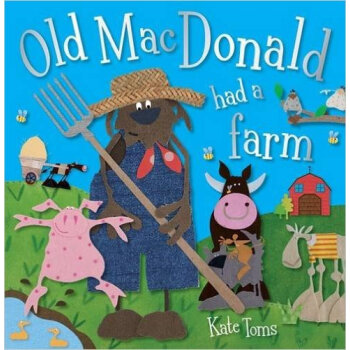![Dinosaurs Big and Small (Let's-Read-and-Find-Out Science, Stage 1) 英文原版 [平装] [4岁及以上]](https://pic.tinynews.org/19095687/550bf643N2b430b59.jpg)

具体描述
内容简介
Some dinosaurs were big. How big? As long as four school buses in a row, as heavy as sixteen elephants. Some dinosaurs were small. How small? Read and find out!作者简介
Kathleen Weidner Zoehfeld is the award-winning author of more than sixty books, including Dinosaur Tracks, "a great choice for even the most discriminating dinophiles" (School Library Journal); Did Dinosaurs Have Feathers?, a Children's Book of the Month Club selection described as "fascinating" by Kirkus Reviews; and Dinosaurs Big and Small, a 2003 Oppenheim Toy Portfolio Best Book Award winner. When she's not reading, researching, writing, or editing, Kathleen loves to spend her free time exploring, doing fieldwork, and preparing fossils in the laboratory for her local natural history museums. She lives in Berkeley, California.精彩书评
Children's Literature How big was the biggest dinosaur? How small was the smallest? This book, geared toward teaching preschoolers and kindergartners simple science concepts, shows size difference in a way that children can understand. A picture of a dinosaur with 22 kids laid next to him, shows children how long 89 feet really is. Another picture of a Brachiosaurus next to 16 elephants shows children how much the dinosaur could weigh. Of course, the dinosaurs are described in simple terms, and the pictures to illustrate the book go well with the words. The concept of size is described by the words as well as the illustrations in this book. The last pages of the book describe the name, weight, and length, as well as containing a picture of the dinosaur. A drawing of a human and an elephant is also included to show once again the size in relation to something that a young child can understand. 2002, HarperCollins, — Nicole Peterson 0064451828 0060279354 School Library Journal Gr 2-4-Discussing the wide variety of sizes in the dinosaur lexicon, Zoehfeld's simple text presents kids, school buses, and elephants as yardsticks for the measurement of a number of weighty sauropods and lesser lights, from the massive Argentinosaurus to the cat-sized Compsognathus. Washburn's eye-catching illustrations, in glowing rusts and purples, blues and greens, march step-by-step with the text. Included is a double-page lineup of all the mentioned saurians, with a brief note on each one that gives its scientific name, pronunciation, length, and weight. Brightly colored, informative, and on a cherished topic, the book is certain to gather no shelf-sitter dust.-Patricia Manning, formerly at Eastchester Public Library, NY Copyright 2002 Cahners Business Information. Fewer Reviews Kirkus Reviews An introduction to dinosaurs for younger readers, this Stage 1 "Lets-Read-And-Find-Out Science" title describes big and little dinosaurs from Diplodocus, "one of the biggest," to Mussaurus, only as large as a baby-bird when hatched. More recent giants, like Seismosaurus, Argentinosaurus, and Brachiosaurus are also introduced in the same low-keyed fashion. The author explains the latter may have weighed as much as 16 elephants, and the illustrator obligingly shows a tower of 16 elephants. The author provides size comparisons throughout; for example, Giganotosaurus had teeth "the size of a banana," and Seismosaurus at 130 feet long was, "longer than 4 school buses." Soft chalk drawings in buff, blue, and purple, show the kinder gentler side of dinosaurs-even the meat-eaters look somewhat cuddly. The illustrator concludes with a scale drawing of the dinosaurs presented, including an elephant and a human for scale. While there is little new here, this is a non-threatening additional purchase for the dinosaur set. (Nonfiction. 5-7)前言/序言
用户评价
最后,这本书的延伸价值和教育可持续性,是我认为它格外值得推荐的原因之一。一本好的科学启蒙书,不应该读完一遍就束之高阁,而应该能成为孩子未来学习的跳板。我预感这本书的设计理念,正是为了实现这一点。通过对“大”与“小”这一相对概念的反复强调和多角度展示,它其实是在培养孩子一种非常重要的科学思维方式——比较和测量。这种思维模式一旦建立,无论将来孩子接触到天文学、生物学还是数学,都会受益匪浅。它不仅仅是关于恐龙,它是在教孩子如何观察和量化他们周围的世界。此外,这本书的系列属性(Let's-Read-and-Find-Out Science)本身就是一个巨大的优势,它暗示了背后有一个更宏大、更系统的知识体系等待孩子去探索。家长可以很容易地找到下一本或上一本相关的书籍,形成一个连贯的学习路径。这使得这本书的购买更像是一项对孩子长期学习兴趣的投资,而不是一次性的消费。它为未来的深入学习打下了坚实的情感和基础认知的基石,这一点,是任何一本只停留在表面介绍的读物都无法企及的高度。
评分我一直觉得科普读物最难拿捏的就是平衡感,既要用孩子能理解的语言讲述复杂的知识,又不能过度简化以至于失真。从我快速翻阅的体验来看,这本书在这方面做得相当出色。它似乎采用了一种非常巧妙的叙事策略,没有一开始就抛出大量的专业术语,而是像一位耐心的导游,循序渐进地引导读者进入恐龙生活的时代。我注意到它的文字量控制得非常好,每一页的文字都非常精炼,核心信息突出,这对于注意力集中时间较短的幼儿来说是至关重要的设计考量。我猜想,这本书的编写者一定是深入研究了儿童的认知发展阶段,他们懂得如何将“大”和“小”的概念,通过对比的方式自然而然地植入到孩子的思维中,而不是生硬地说教。这种潜移默化的教育方式远比填鸭式的灌输要有效得多。而且,我能感受到那种充满好奇和探索精神的语气贯穿始终,仿佛作者本人也在和我们一起惊叹于这些史前巨兽的奇妙。这种真诚的交流感,是很多干巴巴的教科书所无法比拟的,它让学习过程变成了一场充满乐趣的冒险,而不是一项任务。这种深入浅出的功力,绝对是区分优秀科普书和平庸读物的关键所在。
评分从一个注重阅读体验的角度来看,这本书的语言运用简直是教科书级别的示范。它成功地避开了所有可能让四岁孩子感到困惑的复杂句式或晦涩词汇,取而代之的是大量拟声词、动词和形容词的巧妙运用,这些都极大地增强了阅读时的画面感和动感。我甚至能想象出,当家长用富有感情的声音朗读这些文字时,孩子会多么投入。比如,描述恐龙行走时,文字会模拟出“咚、咚、咚”的沉重脚步声,或者描述捕食时的迅猛,语言的节奏也会随之加快。这种对声音和节奏的重视,直接提升了这本书的“听觉”价值,使其成为一本极佳的亲子共读材料。它教会了孩子如何用声音来描绘世界,这本身就是一种高级的语言训练。再者,它在介绍恐龙习性时,措辞充满了积极和探索的意味,没有过分的渲染血腥或恐怖,而是侧重于展示恐龙作为自然界一部分的生存状态。这种温和而又真实的叙述基调,保护了幼儿纯真的心灵,同时又不失科学的准确性。这种对目标读群体心理的精准把握,令人印象深刻。
评分这本关于恐龙的书,光是翻开封面我就被那些生动的插图吸引住了,色彩搭配得恰到好处,既有科学的严谨感,又不失童趣。作为给学龄前孩子准备的读物,它在视觉上绝对是满分。我特别欣赏作者和插画师在呈现恐龙形象时所下的功夫,每一个细节都处理得非常到位,无论是霸王龙那充满力量感的肌肉线条,还是腕龙那悠长的脖颈,都栩栩如生。而且,这本书的开本拿在手里非常舒服,边缘圆润,很适合小手抓握。我给我的侄女读的时候,她几乎是目不转睛地盯着那些画面,甚至会主动去指认书里出现的不同种类的恐龙,这说明图画的吸引力是毋庸置疑的。它不仅仅是展示恐龙的样子,更像是在进行一场视觉探索,让孩子在欣赏艺术的同时,也开始建立对不同生物形态的初步认知。对于初次接触恐龙世界的小朋友来说,这种沉浸式的体验是极其宝贵的,能够极大地激发他们对外在世界的求知欲。这本书的装帧质量也很让人放心,即便是被孩子不小心弄湿或弄脏,似乎也能经受住考验,这对于高频率使用的儿童书籍来说简直是福音。总之,从第一印象来看,这本书在美学设计和物理制作上,都展现出了极高的水准,为接下来的阅读体验奠定了坚实的良好基础。
评分这本书的整体结构设计,从目录的编排到章节的过渡,都体现出一种清晰且逻辑严谨的脉络。我发现它似乎并没有仅仅停留在罗列恐龙名称的层面上,而是更注重构建一个关于“尺寸差异”的认知框架。这种聚焦于单一、易于理解的概念(大与小)作为主线,对于低龄儿童建立知识体系是非常有帮助的。它提供了一个锚点,让孩子可以围绕这个点去扩展他们对恐龙世界的理解。想象一下,当孩子读到一只巨大的雷龙和一只小小的某种兽脚类恐龙并置对比时,他们脑海中会立刻形成一个关于规模的直观感受。这种对比手法,远比单独描述一个庞然大物来得更有冲击力和教育意义。而且,这种结构化的呈现方式,也方便家长进行二次引导和提问,比如“你觉得哪只恐龙的脚印会更大?” 这种互动能有效促进孩子的主动思考。书籍的排版也极力配合了这种结构,文字和图像的相互支撑,保证了信息传递的效率和趣味性。我非常欣赏这种看似简单实则深思熟虑的编排艺术,它让一本简单的图画书具备了扎实的教学基础,绝非只是昙花一现的娱乐品。
评分孩子喜欢,硬件很划算
评分孩子喜欢,硬件很划算
评分纸张和印刷质量都不错,但书很薄,这样算下来就很贵了。
评分不错的科普书
评分给孩子买的孩子很喜欢
评分有点难度,先囤着
评分喜欢这个画风
评分非常好,娃很喜欢,一直在京东买书的
评分非常好的书
相关图书
本站所有内容均为互联网搜索引擎提供的公开搜索信息,本站不存储任何数据与内容,任何内容与数据均与本站无关,如有需要请联系相关搜索引擎包括但不限于百度,google,bing,sogou 等
© 2025 book.idnshop.cc All Rights Reserved. 静思书屋 版权所有

![The Western Canon [平装] pdf epub mobi 电子书 下载](https://pic.tinynews.org/19129841/rBEHaVBlDPgIAAAAAABIF1vt9a8AABjVgP-FRsAAEgv804.jpg)
![Thanksgiving Is for Giving Thanks [平装] [3岁及以上] pdf epub mobi 电子书 下载](https://pic.tinynews.org/19138208/ebf1afc7-3366-4326-95e1-f5c11bb48783.jpg)
![Owl Moon [精装] [3岁及以上] pdf epub mobi 电子书 下载](https://pic.tinynews.org/19138994/049cae0d-1164-4e23-b532-494c417e588f.jpg)
![Cam Jansen & the School Play Mystery (Cam Jansen Puffin Chapters) [平装] [8岁及以上] pdf epub mobi 电子书 下载](https://pic.tinynews.org/19140198/02931d09-4793-416d-8a24-7ba6b01f6b30.jpg)
![The Sun Is My Favorite Star 英文原版 [平装] [4岁及以上] pdf epub mobi 电子书 下载](https://pic.tinynews.org/19235540/rBEGDU-jbl4IAAAAAABiwKTH_tMAAAvAgKF17wAAGLY992.jpg)
![Flat Stanley at Bat (I Can Read, Level 2) 扁平的斯丹利在击球 英文原版 [平装] [4岁及以上] pdf epub mobi 电子书 下载](https://pic.tinynews.org/19249070/550bf03eNa31d1783.jpg)
![Citizens of the Sea: Wondrous Creatures From the Census of Marine Life [精装] pdf epub mobi 电子书 下载](https://pic.tinynews.org/19371496/rBEhUlJbkKwIAAAAAAEDevmn8JMAAEHKQMm5KMAAQOS212.jpg)
![Beauty and the Beast (Flip-Up Fairy Tales) [平装] [3岁及以上] pdf epub mobi 电子书 下载](https://pic.tinynews.org/19409456/rBEhU1JbaE8IAAAAAAD4yIut05IAAEGpADKO38AAPjg056.jpg)
![Jedi Academy: Star Wars绝地学院:星球大战 英文原版 [精装] [8-12岁] pdf epub mobi 电子书 下载](https://pic.tinynews.org/19456216/5539a787N22d385f8.jpg)
![We Were Liars 我们都是骗子 英文原版 [平装] pdf epub mobi 电子书 下载](https://pic.tinynews.org/19478841/53bcfd4cN03f2aaf7.jpg)
![The Cuckoo's Calling[杜鹃在呼唤] [平装] pdf epub mobi 电子书 下载](https://pic.tinynews.org/19500691/rBEbRVNp4VUIAAAAAAB0JXtgzbQAAAFSwOyyT0AAHQ9269.jpg)
![Oliver Twist [精装] pdf epub mobi 电子书 下载](https://pic.tinynews.org/19512389/5463148fNae5b4ad3.jpg)
![Madrigals Magic Key to Spanish 英文原版 [平装] pdf epub mobi 电子书 下载](https://pic.tinynews.org/19522588/54632034Ne67c47e8.jpg)

![Thea Stilton #20: Thea Stilton And The Missing Myth老鼠记者妹妹菲-斯蒂顿系列:主演消失之谜 英文原版 [平装] [7-10岁] pdf epub mobi 电子书 下载](https://pic.tinynews.org/19531245/5523495dN6d94da46.jpg)
![The Happy Prince And Other Stories [平装] pdf epub mobi 电子书 下载](https://pic.tinynews.org/19540218/5551c441N9e1dfd8a.jpg)


![DK Readers L2: Amazing Bees [平装] [05--07] pdf epub mobi 电子书 下载](https://pic.tinynews.org/19575409/56eb56b1N62d95682.jpg)
![DK Readers L2: Spaceships and Rockets [平装] [05--07] pdf epub mobi 电子书 下载](https://pic.tinynews.org/19576369/56eb56feNa113296f.jpg)